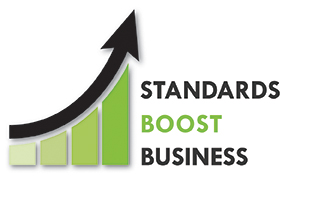 |
|
|
VALUE OF STANDARDS for Companies
Download
a
customizable Elevator Pitch
to aid you in communicating the need for a robust standards and conformance program to the C-suite executives in your company.
Standards and conformity assessment activities are inextricably linked to all facets of your business.
Companies who are most successful in their sectors recognize that standards and conformance are business tools
that should be managed right alongside their quality, safety, intellectual property, and environmental policies.
In addition, standardization and conformity assessment activities lead to lower costs by reducing redundancy, minimizing errors, and reducing time to market.
And demonstrating compliance to standards helps your products, services and personnel to cross borders, ensuring that
products manufactured in one country can be sold and used in another. Furthermore, your business can not only reduce the
economic risk of research and development activities by participating in standardization, you can also lower your overall
R&D costs by relying on previously standardized technologies and terminologies.
Consider this . . .
If the U.S. private sector does not step forward to develop a standards and conformance
solution to a key national priority, then the U.S. government will meet that need with a regulation
Companies that participate actively in standards development activities reduce costs, increase efficiencies, facilitate and maintain
market access, and gain a more competitive advantage than those who do not participate. From a market-share point of view, it’s likely
that your competitors are actively engaged in standardization. Without your influence and input, your competitors can dictate the way you
will be doing business through the content of a standard. Worse yet, they can even include language that effectively standardizes your product off the market.
 |
|
When your business participates in standards-setting activities, you are bringing your concerns and needs to bear on the process.
You have two choices: position your organization to take a seat at the table and be part of the standards-setting process, or let your
competitors dictate the way you will be doing business.
Consider this . . .
Your customers want products and services that are high quality, reliable, consistent, and safe.
Reliance upon standards and conformity assessment activities helps to demonstrate these important characteristics, earning customer loyalty.
But isn’t it expensive to participate?
In challenging economic times, some executives decide to downsize or even eliminate their organization’s standards
development efforts. What they don’t realize is that re-starting their internal processes later can be much more expensive
and time consuming than maintaining a well-functioning system.
For example . . .
On the case studies page, Deere & Company and The Boeing Company have offered examples of why they rely
on standards and conformance as an essential part of their business practices.
|
Beyond the bottom line: standards impact quality, lead-time, factory flexibility, and supply chain management. |
|
Standardization and conformity assessment activities lead to lower costs by reducing redundancy, minimizing errors, and reducing time to market. |
|
Demonstrating compliance to standards helps your products, services, and personnel to cross borders. Standards also make cross-border interoperability possible, ensuring that products manufactured in one country can be sold and used in another. |
|
Businesses not only reduce the economic risk of their research and development activities by participating in standardization, they can also lower their overall R&D costs by relying on previously standardized technologies and terminologies. |